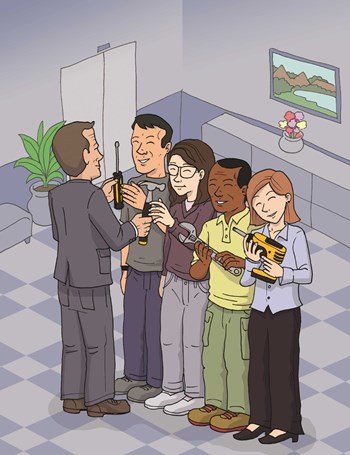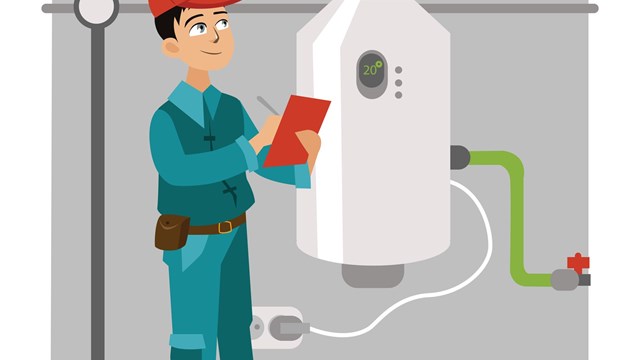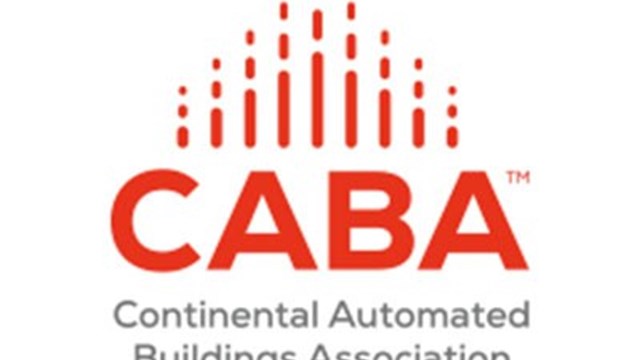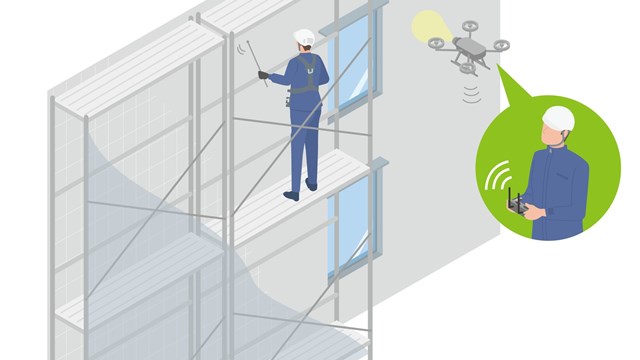
Say you’re in bed, and you hear what sounds like the shower going. It's late, and you're tired, so you pay it no mind. You wake up at 4 a.m. to get a glass of water and find half the rooms in your apartment flooded— you forgot to turn the shower off! You throw blankets and towels on the floor to soak up the water and call your building’s maintenance staff.
With the aid of a dehumidifying machine, they’re able to get most of the moisture out of the flooded areas. But the wooden floor tiles themselves are heavily damaged, and a fair amount of water seeped into your downstairs neighbor's unit, damaging the ceilings, walls and some artwork. Who’s responsible for restoring the flooring? And what about the water that poured into the apartment below?
The Basics
Finding out what systems and features in an owner's unit are his or her responsibility and which are the association’s responsibility can be a very complicated subject. Many principles are universal but other details can vary from building to building, depending on the rules of that particular community.
According to Lee Heller, a director of business management with Associa, (a management company with locations across the U.S., including two in New Jersey) owners are “typically responsible for the interior of their unit, the wall, ceiling and floor coverings. There's a hot water heater or an air handler, their appliances, the plumbing and electrical panel.” Unfortunately, this would likely include those wooden floor tiles, unless your building administration decides to be generous.
An exception, however, is piping inside the walls, says Robert Meyer, a director of engineering services for national property management firm FirstService Residential. “In a typical condominium association, all domestic plumbing contained within the walls (risers) belongs to the association. Conversely, the owner’s responsibility is on their side (or inside) of that wall. The unit owner is responsible for all the plumbing fixtures within their unit—tubs, toilets, sinks, faucets and drain lines from their unit to the vertical main line,” Meyer explains.
So, what else is the building or development responsible for? An association is responsible for whatever is considered part of the structure of the building, as well as common and limited common elements. This would include the hallways, lobby, elevators, basement, boilers or rooftop A/C, plus the electrical wiring from the point it enters the building from the street to the point it enters the circuit breaker or junction box.
All this talk of private usage, common and limited common elements can become quite confusing. Meyer offers a simple tip for understanding the basics of repair responsibility. “A good way to understand where responsibility lies is to ask, 'Who is able to use this fixture? Is it only the residents of the unit or all who live in the building?' If the answer is only the unit residents, then it is their responsibility to maintain and service it properly,” he says.
Gray Areas
As in nearly everything, there are some gray areas when it comes to who's obligated to fix what in a multifamily building.
“Most misunderstandings come after an incident has occurred, i.e., water damage and electric problems,” Meyer says. “Plumbing branch lines are always an issue. While contained within the walls, these branch lines are considered a limited common element because it only services a particular unit’s kitchen or bath. Electrical service to the unit can also be an issue. Service starts at the meter, but most owners are under the impression it starts at their circuit breaker panel.”
“For example,” Meyer continues, “when there is a failure between the meter and the unit it is usually misunderstood to be the building’s responsibility but it is not. In most buildings, there is a meter room on each floor, and in some cases, the distance from that room to a unit’s breaker panel can be 30 feet or more. Regardless, the entire distance is the owner’s responsibility since the electricity is being passed through the meter, leaving the meter room and powering their breaker panel,” Meyer says.
Other places at the intersection of the wall and a specific piece of equipment are a frequent source of conflict, such as windows, air conditioning equipment and air conditioning sleeves within the walls.
“One gray area is the limited common elements which are common elements that are restricted in use to one apartment,” says Attorney Francis J. McGovern, Jr., founder of McGovern Legal Services, LLC in North Brunswick. “A good example might be the patio or the deck. So sometimes there are debates as to who is responsible for maintaining, repairing or replacing the deck or patio. The owner may be required to shovel snow off the patio but the association may be obligated to make structural repairs and replace it. In some associations it gets even more twisted than that. The homeowner may be required to replace the deck boards, the actual treads but the association may be required to replace structural elements,” McGovern says.
Alterations are yet another potentially sticky area—though perhaps a little less so than some of the others mentioned above, since most communities have the rules and regulations regarding alterations spelled out explicitly in their governing documents. In general, if you do an alteration, you are responsible for it, the professionals say.
It’s in the Docs
The most effective way to cut down on all this uncertainty of repair liability—and hopefully prevent it from materializing in the first place—is for residents to know the rules in their building. And for their part, building administrators should make sure the rules are clear, concise and unambiguous.
For owners, learning the rules starts with reading the governing documents, which contain all the specifics of repair responsibility.
“The New Jersey Condominium Act, The New Jersey Cooperative Recording Act and the Planned Real Estate Development Full Disclosure Act address these things generally but most times you look to the governing documents,” says McGovern. “These acts describe generally—if you want to call them default provisions or who is responsible for certain things, but they are not exhaustive. Oftentimes the associations governing documents can reallocate responsibility or allocate responsibility differently from the statute.”
The professionals agree that the majority of New Jersey area associations have the specifics of building system responsibility outlined in their documents. So, while it might be rare for a board to have the need to amend their documents with repair and maintenance responsibilities clauses and clarifications, it can be done if need be. Sometimes, even just developing a simplified version of these clauses might guide owners to a better understanding of maintenance responsibilities, Meyer says. If a board does feel the need to go this route, its attorney should carefully review these documents to make sure they conform with the building’s current or desired practices.
“I have an ongoing dispute right now in a high-rise where the residents are insisting where the residents are insisting that the association make the façade water tight. And the association is saying we cannot make the façade water tight without the unit owners who, according to documents, own the windows and the windows are problematic,” says McGovern. “It’s a standoff and it hasn’t been resolved. If I had my choice I would amend the governing documents to make the windows part of the common elements, therefore it would be the responsibility of the association.”
The Importance of Insurance
Documents aside, requiring homeowners’ insurance policies of all shareholders or unit owners is one way management can be sure that gaps can be closed and conflicts avoided, Heller says. Such a policy can cover not only personal items such as computers and furniture, but also paint, wallpaper and flooring.
Adequate insurance coverage also plays an important role in the intersection of maintenance and repair responsibility, Heller adds. He illustrates this point by asking readers to visualize a Venn diagram.
“One circle is ownership—who owns the item, one is maintenance responsibility, and the third is insurance responsibility,” he says. “With well-written or smart documents, they're all the same. But unfortunately, many times they are not the same. So in some regions, state statute comes in and says that by law, the association is responsible for the insurance on the air-conditioning system from the roof to the air handler. So in the casualty event—a storm or a fire or whatever—the claim would go through the association's insurance, and they pay the premium for that.”
“However,” Heller continues, “that immediately makes owners think the association is responsible to maintain the air-conditioning system, which it's not. So when it breaks, or it isn't serviced regularly, those problems come up and those are the unit owner's absolute responsibilities. On the third circle, let's say the unit owner owns the air handler in their unit and the air-conditioning compressor on the roof. They own that equipment, but that unit up on the roof is in a common area that's not necessarily available to unit owners. So, that sometimes creates a problem as well,” he says.
Oftentimes, it’s not easy to determine responsibility for repair elements. Most of the time, whether you’re talking about condos, co-ops or townhomes and when owners take good care of their units, problems won’t occur. For those times when they do, be sure to consult your attorney and building manager and look to your governing documents for answers.
Raanan Geberer is a freelance writer and a frequent contributor to The New Jersey Cooperator. Staff writer Christy Smith-Sloman and editorial assistant Enjolie Esteve contributed to this article.









Leave a Comment